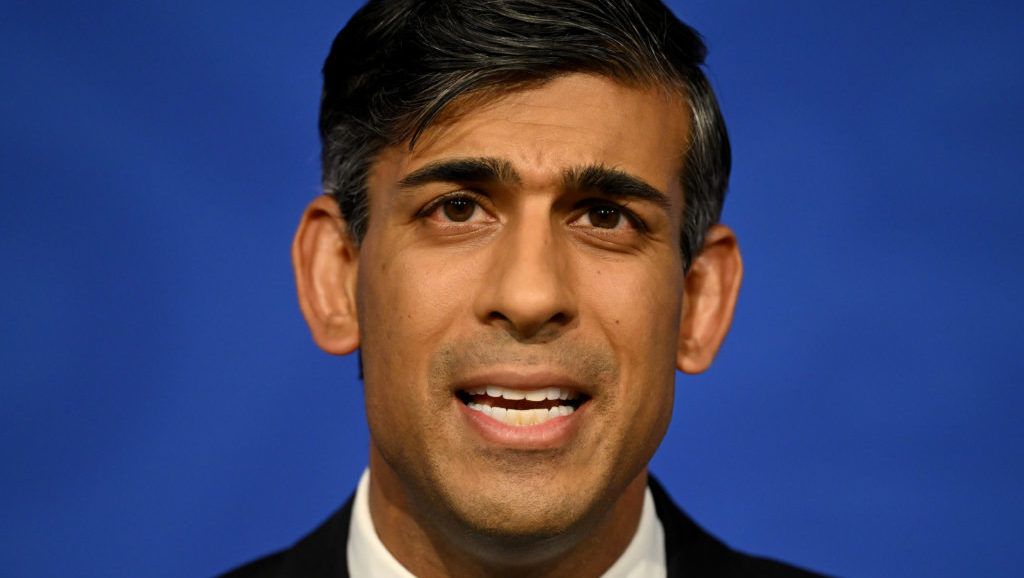Jan. 20—WATERTOWN — Community leaders and concerned citizens will gather Thursday to see if they can come up with a way to keep Zoo New York from permanently closing.
In October, the Thompson Park Conservancy, the group that operates Zoo New York, announced it was closing without a date to reopen, due to continuing financial issues.
It’s not the first time that the zoo in Thompson Park has faced a similar situation since it opened a century ago.
Retired veterinarian David M. Plante and pediatrician Alfred L. Gianfagna are among the 13 members of the city’s Zoo Task Force, called upon now to look at what can be done to keep the zoo open.
“If it closes, it will never reopen,” Gianfagna said. “That’s a fact that I never want to see.”
More than 30 years ago, Plante and Gianfagna were among a small core of zoo supporters who stepped up to save the zoo when there were calls to make drastic changes — or close it.
For decades, the city-owned Thompson Park zoo, like others across the country, displayed a diverse collection of exotic and indigenous animals. Kangaroos, lions, monkeys, bears, rabbits, raccoons and others were kept in small cages.
As early as 1981, the zoo faced calls for closure after the city allowed the facility to deteriorate, causing what was called “deplorable conditions” for animals. It had been called one of the 10 worst zoos in the nation.
Animal right groups were in an uproar, especially over the condition of the zoo’s two lions that were kept in small cages with wooden perches and cement floors.
“They hated us.” Plante recalled.
Zoo supporters had a lot of work to do to turn the zoo around. They had to convince the Watertown City Council to make drastic changes, Gianfagna said.
They came up with a plan to transform the facility into “an only-one-of-its-kind zoo,” Plante remembered.
Born from conversations around his kitchen table, the zoo would no longer exhibit exotic animals, he said. The zoo would feature only animals native to New York.
What was it going to take for volunteers to revive the zoo after so many years of neglect?
In 1991, Plante, Gianfagna and Thomas Bradley, who was known for his involvement in the Westminster Kennel Club, were credited as founding members of Thompson Park Conservancy. That year, the group took over operation of the zoo and continued to make substantial changes.
In the years after the takeover, volunteers helped care for the animals, fed them and moved them indoors at night while City Council decided what the zoo’s future would be.
The conditions of the lions prompted change with public outrage even coming from children, said former city manager and city planner Kenneth A. Mix, who was recently appointed board chair of the Thompson Park Conservancy.
There was also a trend nationally for zoos to get rid of cages and a move to create habitats that are hospitable and stimulating for animals while allowing visitors to view them in natural settings, Mix said.
The zoo was already headed in that direction when the City Council agreed in 1989 to eliminate the lions exhibit and create natural settings. They appropriated $700,000 to make the changes.
By then, volunteers were already renovating buildings, constructing sheds, installing fences and landscaping, replacing sidewalks and completing other work to create natural habitats for the animals. Plante remembered spending weekends getting the zoo ready for reopening.
The monumental task for the volunteers, however, was finding homes for the monkeys, lions and other exotic wildlife, Gianfagna said.
Many of those animals ended up at Primarily Primates sanctuary in Texas, where they were provided permanent, lifetime care and housing. Plante couldn’t recall whether the two lions were sent there or went elsewhere.
Finally, the new zoo was ready. But the group didn’t have any animals, Plante said.
In those early years, the Children’s Zoo, where visitors could feed and pet animals, became a popular attraction and helped raise money. Thanks to funds raised by the Children’s Park Zoo Club, the zoo was able to purchase its first animals.
The conservancy arranged for animals to be secured from mainly wildlife rehabilitators.
The next several years were the zoo’s most successful, Gianfagna said.
Don Moore was hired as the zoo’s first director and the facility grew under his leadership. He went on to become the associate director at the Smithsonian National Zoo in Washington, D.C.
During those days, the exhibits included bears, a cougar, owls and deer. An otter exhibit was added later and has remained a popular attraction.
Earth Day and other special events were attended by thousands of people. The Fragile Wilderness events brought in noted birds of prey exhibits and Jack Hanna, director of the Columbus Zoo and Aquarium who appeared many times on “The Tonight Show” with Johnny Carson.
One year, Chris and Martin Kratt, hosts of the PBS television series “Zoboomafoo,” also appeared at a Fragile Wilderness day event.
With the auditoriums at the Dulles State Office Building and Jefferson Community College full, the Fragile Wilderness events featured different themes for children and adults. They were designed to teach them about nature and conservation, goals of the zoo that remain today.
“It’s for the kids,” Plante said. “That’s why you have a zoo.”
Glenn Dobrogosz, another executive director of the zoo, is credited for its continued growth in those early days.
Attendance ballooned to 100,000 visitors a year, Plante recalled.
In 2001, Mark D. Irwin, a zookeeper at the Toronto Zoo, moved to the north country to work as a veterinarian at Plante’s vet clinic in the town of Watertown.
Irwin subsequently became involved in the zoo.
An early memory that stand outs for Irwin was seeing Dobrogosz walking through the zoo with a hammer in his hand about to put up a sign.
He was impressed with dedication by the volunteer board and the zoo’s staff.
“You’d never see the Toronto executive director doing that,” Irwin said.
In 2005, Irwin helped the facility gain accreditation with the Association of Zoos and Aquariums, which now represents more than 235 facilities across the country and elsewhere, according to its website. The zoo went through a strenuous approval process to receive that recognition, he said.
“It was incredible to achieve,” he said.
The zoo also became known nationally for its success, Plante recalled. The Thompson Park Conservancy hosted a conference for zoos across the state.
But that kind of success was short lived.
The next couple of years were marred by controversy.
The conservancy hired a new executive director who had a background in marketing and not in zoos.
Zoo staff was not happy with some of the decisions made and complained to the zoo board about them. That led to an investigation by the organization that accredited the zoo just two years earlier.
Plante went to Colorado to unsuccessfully fend off the accusations, including a sexual harassment complaint, he said. But a team from the AZA sent to Watertown to inspect the zoo found numerous deficiencies.
The zoo lost accreditation.
Amid the controversy, Irwin — a biology professor and director of the Zoo Technology Program at Jefferson Community College who remains active at the zoo as its interim executive director — pulled his JCC students from field work training at the zoo, he said.
They were turbulent times, he said. The zoo has not been able to regain some of that success it experienced during the early days of the conservancy, he said.
During subsequent years, the zoo went through a series of executive directors. None stayed for very long.
The facility remained stagnant, Irwin said. While it owned the zoo, the city has only provided funding to pay for the cost of utilities and building maintenance. The zoo didn’t have funding for new animal exhibits or amenities, he said.
Zoos need to add exhibits to get visitors to keep coming back, he said. Most other zoos receive about 48% of their budgets from public funding. The Rosamond Gifford Zoo in Syracuse, for instance, is fully funded by Onondaga County.
To get the zoo back on track, the conservancy hired Lawrence J. Sorel, the former executive director of the Seneca Park Zoo for more than 20 years. He promised to stay on to work at the zoo for five years.
Sorel had the task to convince the city and Jefferson County to provide more funding, just as he and the conservancy had high hopes to grow the zoo, create new animal habitat and expand. For the first time in decades, the zoo had a master plan in place as a blueprint for the future.
The city promised the zoo it would appropriate $1 million in American Rescue Plan Act funding to create an “Adventure Land” at the back of the zoo. The new area would feature a zip line, a climbing wall and natural play areas. The entrance to the zoo would also get major improvements.
But the City Council withdrew its $1 million commitment.
And the COVID-19 pandemic hit in 2020, forcing the zoo to close during the initial outbreak.
Before and during the pandemic, Sorel approached City Council a number of times about helping to bail out the zoo.
In March 2022, council members agreed to contribute $175,000 in ARPA money to the zoo. The zoo used $75,000 to design the zoo improvements and the remaining helped with operation costs and for public relations and marketing.
At one point, with no attendance revenues coming in or events being held, zoo officials considered closing permanently.
The conservancy, however, kept it open during those financially dark days.
In October, the conservancy decided the current business model had to change or it was time to close. Two-thirds of staff were laid off and the zoo moved to an austerity budget. In a cost-saving move, Sorel retired.
In response to the financial difficulties, then-Mayor Jeffrey M. Smith put together the Zoo Task Force in November. The group has met once to discuss the situation. The group was divided into committees to study different aspects of the zoo. The second meeting is slated for 2:30 p.m. Thursday.
Plante and Gianfagna are confident that the zoo will reopen.
Thirty years ago, the zoo didn’t have any animals when it made those big changes. It’s in better shape now than it was then, he stressed.
“If we weren’t talking about it, that’s when I would be worried,” Plante said.
The zoo is too valuable of a community asset, Gianfagna said, adding that such a small city as Watertown should feel fortunate to have a zoo.
Mix added that Zoo New York is “too worthwhile” to lose.
Signup bonus from




